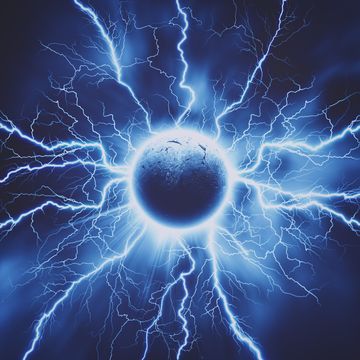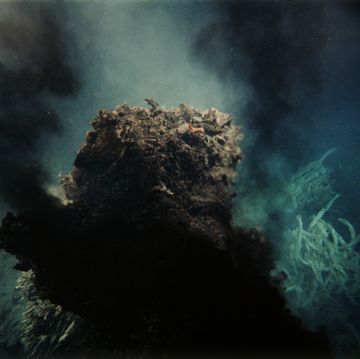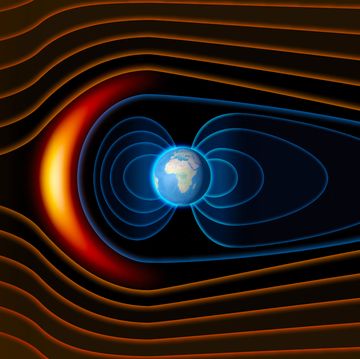It's easy to forget that there is light all around us, emitting from changes in the heat and energy of molecules, that we can't see at all. In fact, of the entire electromagnetic spectrum—the chart of all the known frequencies and wavelengths of light—we can only see about 0.0035 percent. That's almost nothing at all! And yet all the vibrant colors and hues of the world are contained within that tiny sliver of electromagnetic radiation.
Our eyes cannot see infrared—the light that has a slightly lower frequency and longer wavelength than visible light. But our machines can. Telescopes taking observations in infrared let us see more distant and alien objects that are hidden from us in visible light. But sometimes just an infrared camera on Earth is enough to make you reconsider the way you see the world.
Invisible Oregon, created by professional photographer Sam Forencich, is a video of the dramatic landscapes of the Pacific Northwest captured by infrared cameras. The footage we watch doesn't allow us to directly see infrared, but a rendering created from infrared light shows us what the world might look like if our eyes were just a little different.
The pink and purple tints that wash over the countryside lend the Oregon landscape an alien quality, like a world with a different color sky. But it's not until the moon rises and its light drives the shadows from the land, clearly illuminating the earth while the stars and Milky Way still stand out in bold relief, that you realize how very different the world would be if we could see just a little more light.
Invisible Oregon is the perfect example of a project based on science that becomes an artistic expression. We can understand the world around us more completely, not just in the sense of knowing the physical properties of light, but also by beginning to comprehend our own limitations when we perceive the world.
In Forencich's words:
Ever since my youthful days of "experimentation" I've often wondered about the nature of reality. Those of you that still believe in science understand the limitations of our perceptions, and it's no secret that many creatures exceed our abilities to interpret the world around us. The idea that we have to process the sensory data coming into our brains makes it seem like we are already a step removed from the real world.
So what exactly are we missing? What do animals experience that we can't, and how do our human perceptions vary from person to person? While this film does nothing to answer these questions, time-lapse and infrared photography do, in a metaphorical sort of way, extend our sensory abilities so we can imagine a world beyond ours. Ultimately I think this is what draws us to these forms, not to solve the mystery, but to flirt with it's boundaries.

Jay Bennett is the associate editor of PopularMechanics.com. He has also written for Smithsonian, Popular Science and Outside Magazine.













